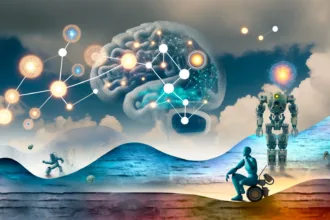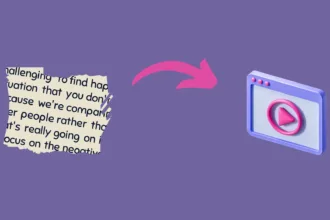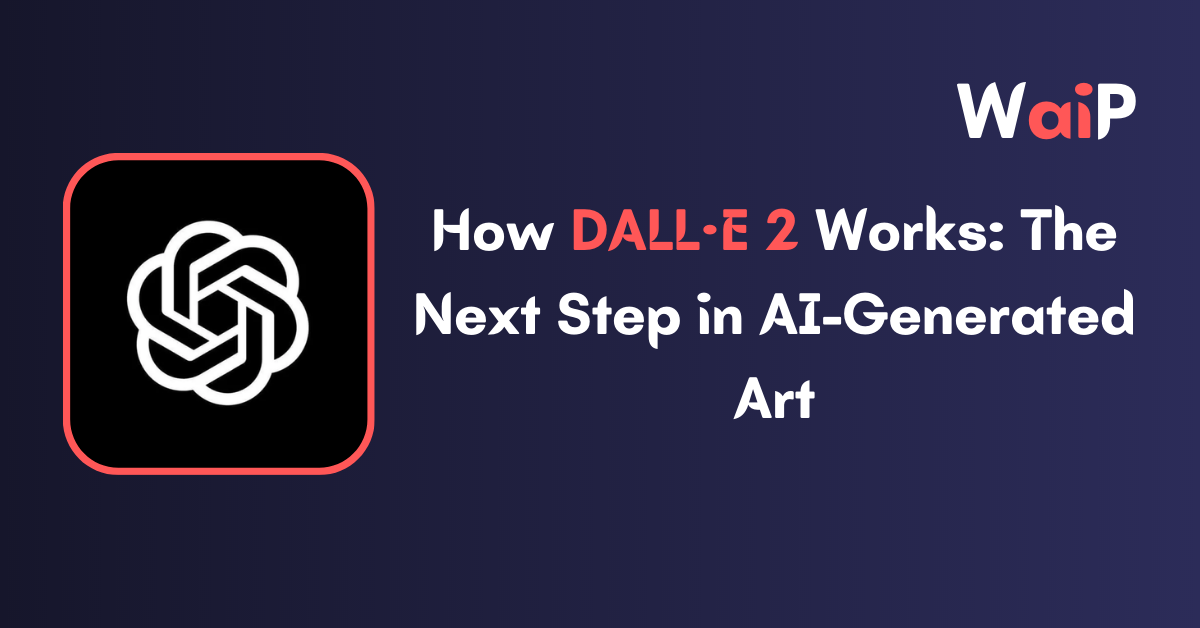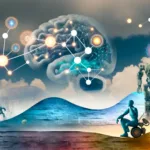As AI continues to permeate every aspect of our lives, it’s also making striking advancements in the realm of creativity. One breakthrough that stands at the forefront of AI-generated art is DALL·E 3, developed by OpenAI.
This impressive text-to-image Artificial Intelligence system can generate breathtaking images from natural language descriptions, bringing to life anything from a “bluebird sitting on a cherry blossom tree” to a “robot dancing in the rain.”
But how exactly does DALL·E 3 accomplish this feat? This article explores the inner workings of DALL·E 3, its potential impact, and the ethical considerations it presents in the evolving landscape of AI-generated art.
The Heart of DALL·E 3: The Diffusion Model
At the core of DALL·E 3‘s capabilities lies its diffusion model, a variant of the neural networks family. This model, when trained on millions of images and their accompanying captions, learns to correlate text descriptions with the visual characteristics they represent.
The diffusion model begins with a randomly generated image and subsequently incorporates noise into the picture. The text description directs the application of this noise, refining the image incrementally until it morphs into a striking representation of the description.
Text Encoding: The Bridge between Language and Images
A crucial element in DALL·E 3’s functionality is its text encoder, a neural network that decodes the intricacies of human language. It translates the input text descriptions into vector representations that feed into the diffusion model, guiding the image generation process.
This understanding of language allows DALL-E 3 to generate images that align closely with human imagination, making it a creative partner in the artistic process.
Potential Impact of DALL·E 3: A New Era of Creativity
The implications of DALL·E 3 are vast, with the potential to revolutionize various domains from design and marketing to education. Its ability to create custom images based on specific textual prompts opens a world of possibilities for visual content creation. Imagine businesses advertising products yet to be manufactured or educators elucidating complex concepts through custom visuals.
Limitations and Ethical Considerations
Despite its potential, DALL·E 3’s capabilities also raise important ethical concerns. Its power to generate images so realistic could be misused to create deceptive or harmful content, from fake images contributing to the spread of misinformation to offensive imagery. It underscores the need for robust ethical guidelines and strong content moderation measures.
The advent of such technology also brings concerns about its impact on human creativity, particularly for artists. As AI emerges as a formidable tool for creating art, a balance must be struck to ensure AI complements rather than threatens human creativity.
DALL·E 3 and the Evolution of AI
DALL·E 3 stands as a testament to the evolution of AI beyond its computational roots into the realm of creativity. Its capacity to create art prompts us to reimagine our interaction with AI, making it not just a tool but a creative partner.
AI’s Creative Leap
DALL·E 3 represents AI’s leap into creative realms, blurring the lines between human and artificial creativity. It opens up an exciting new frontier in AI’s capabilities, offering a new lens to view the potential of AI.
The Ethical Debate
As AI ventures into creative spaces, ethical considerations become paramount. The advent of AI-generated art brings new ethical landscapes, such as ensuring that AI-generated content doesn’t contribute to misinformation or is used unethically. As we integrate AI into our creative processes, these ethical debates must be integral to the discourse.
Conclusion
DALL·E 3 signifies an exciting advancement in the domain of AI-generated art, pushing the boundaries of AI’s creative potential. Its ability to translate text into stunning visuals marks a significant leap in the evolution of AI.
However, as we harness the power of such technologies, it’s essential to keep the conversation on ethical implications alive and ensure their responsible usage.
DALL·E 3 is not just a harbinger of AI’s creative capabilities; it is a reminder of our responsibility to use technology ethically. As we move forward, the blend of AI and art promises an exciting journey, one that’s bound to change the landscape of creativity forever.

![Best Mobile Games Your Should Try in 2024 [Trending Now] 2 Best Mobile Games](https://wideaiprompts.com/wp-content/uploads/2024/03/Best-Mobile-Games-330x220.webp)



![Best Mobile Games Your Should Try in 2024 [Trending Now] 9 Best Mobile Games](https://wideaiprompts.com/wp-content/uploads/2024/03/Best-Mobile-Games-150x150.webp)


